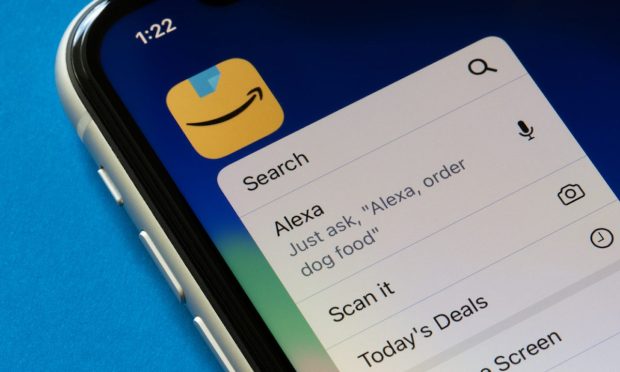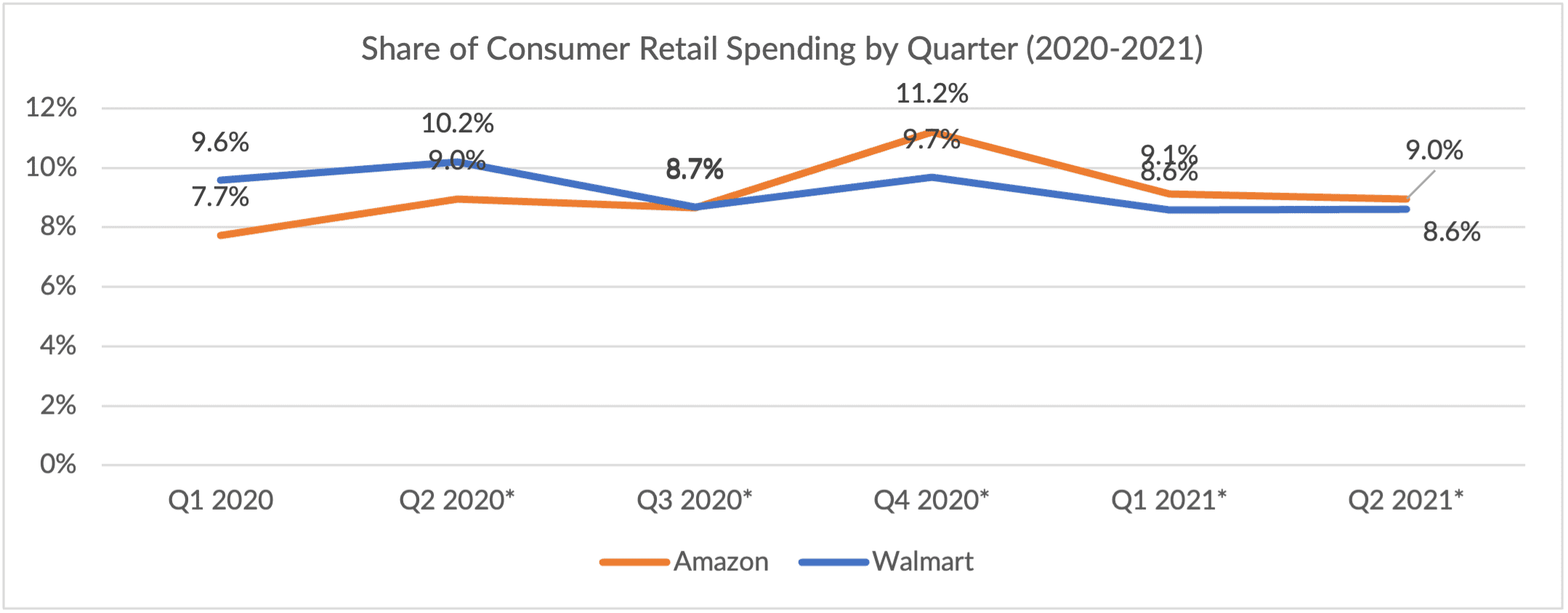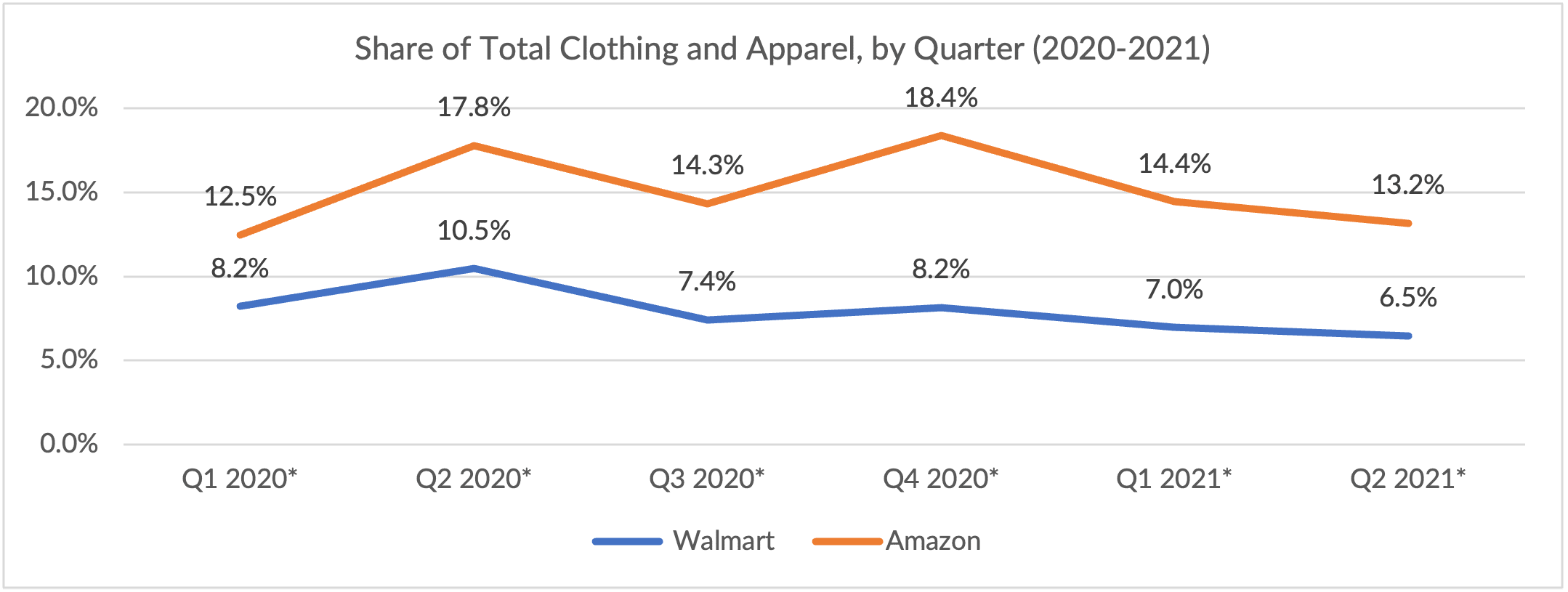AMZN vs. WMT Weekly: Walmart to Expand Conversational Commerce, But Amazon Is Already There

Walmart revealed this week that Store No. 8, the retailer’s incubation arm, is currently testing the ability for customers to text Walmart their shopping lists, in what would be a massive step forward for the box store giant’s connected capabilities.
Walmart already offers voice shopping through Google Assistant, and Dominique Essig, vice president of conversational commerce at Store No. 8, said this experience and the Text to Shop test are teaching the retailer “a lot about when and how customers prefer a conversational experience.”
“The advantage of conversational commerce is that customers can communicate with Walmart the way they communicate with friends and family,” Essig wrote in a blog post. “Easy, convenient — no need to learn how to use a new platform.”
PYMNTS research has found that 31% of U.S. consumers have voice-activated speakers in their homes, but Amazon currently dominates the voice artificial intelligence (AI) market, with a reported 68% share. The company has recently been promoting Alexa’s ability to help customers shop ahead of the holidays with a new campaign that prompts users to ask the virtual assistant, “What are my deals?”
Alexa can also help shoppers plan what to buy by answering questions, building a shopping list and sharing customer recommendations, as well as adding items to a shopping cart and tracking orders after a purchase has been made.
See also: Amazon Alexa Announcements Point to Connected Living Writ Large
Walmart’s conversational commerce move is likely meant to expand the retailer’s growing contextual commerce tools — which include partnerships with Meredith Corp. and Buzzfeed, among others — in an attempt to boost eCommerce sales.
According to PYMNTS’ proprietary data, eCommerce made up only 10.6% of Walmart’s sales, and the retailer had approximately 6% of all eCommerce business in the second quarter — nearly the same shares seen in the similar period last year. For comparison, Amazon has almost 50% of consumers’ eCommerce spending, up from just over 44% in the second quarter of 2020.
Amazon and Walmart are in a dead heat for the title of largest retailer in the U.S., with Walmart holding onto 9.5% of consumers’ retail spending in 2020 and Amazon seeing a 9.2% share. As of the second quarter, Amazon had 9% of the retail spend and Walmart had 8.6%.

Source: PYMNTS Data
Read more: AMZN vs. WMT Weekly: Retail Giants Remain in Dead Heat for Top Spot
From TV Screens to Store Shelves
The Arkansas-based box store retailer also inked a partnership with Netflix to bring a slate of new products related to some of the streaming giant’s most popular shows to Walmart’s store shelves and website. Netflix Hub will include merchandise from “Stranger Things,” “Nailed It!” and “Ada Twist, Scientist,” among others, with T-shirts from the ultra-popular “Squid Game” coming in the near future.
See also: Walmart Partners With Netflix on New Product Lines
The two categories most likely impacted by this partnership — apparel and toys — are where Walmart is hurting the most in its battle with Amazon. In clothing and apparel, Walmart lost the lead to the eCommerce giant in 2018, and the gap has only widened over the course of the pandemic, to a 6.5% share versus Amazon’s 13.2% in the second quarter.

Source: PYMNTS Data
In the sporting goods, hobby, music and books category, Amazon has been gaining steam since 2014, while Walmart has seen its share continue to erode. In 2014, Walmart had a 5.8% share of the category compared to Amazon’s 7.2%; in 2020, the shares were 3.7% and 17%, respectively.

Source: PYMNTS Data
And with a contextual commerce ecosystem of its own, Amazon is likely to hold onto those leads. Last month, the eCommerce giant unveiled its third annual celebrity-studded fashion show with Rihanna’s Savage X Fenty lingerie brand, available to watch exclusively on Prime Video with embedded shopping links.
Amazon earlier this year also launched the integration of artist merchandise within the Amazon Music app, allowing customers to purchase T-shirts, hats, sweatshirts and other apparel alongside songs, albums, livestreams and music videos from their favorite artists.
Read more: Amazon’s Extreme Makeover Paying off With Entire Ecosystem Embracing Fashion
And also: Amazon Music Amps up App With ‘Contextual Commerce’
